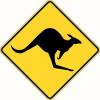This might be a little long-winded.
I have a couple desks I've been working on for about 8 months off and on as I've had time. (From Becksvoort FW 1990). Anyway, I've learned a lot in the process, its my first attempt at a "real" freestanding piece of furniture other than bookshelves and stuff.
So I've hit the point where I need to do some final smoothing on some sections including the tops. I have one in maple and one in cherry. In the maple I have a mix of regular maple and birds eye. The cherry is better behaved but there is one decorative knot that will be in the front that is tricky grain-wise. My #3 bedrock with PMV11 blade isn't cutting it for avoiding tear-out. Freshly honed it does well in some of the areas but not everything. Same with Stanley 4 1/2.
I want to get this right so here are my options I think, which if it involves money then fine, I want a long term solution.
Veritas "small" BU smoother - in stock later this week
Veritas BU smoother - out of stock end of Sept
LN #4 with 50 or 55 degree frog
Something like an HNT Gordon smoother with 55-60 degree pitch - https://hntgordon.com.au/collections...moothing-plane
Bespoke coffin smoother - I'd love this but can't deal with the wait time and probably not the price range I want right now.
As a "right now" solution I have the following:
scraper
regrind the bevel on my veritas #7 or #5 BU planes (45-50 degrees?) - could I get good results with the low angle jack with adjustable mouth?
regrind the bevel on my LN adjustable mouth block plane
random orbit sander
Any advice?





 Reply With Quote
Reply With Quote






